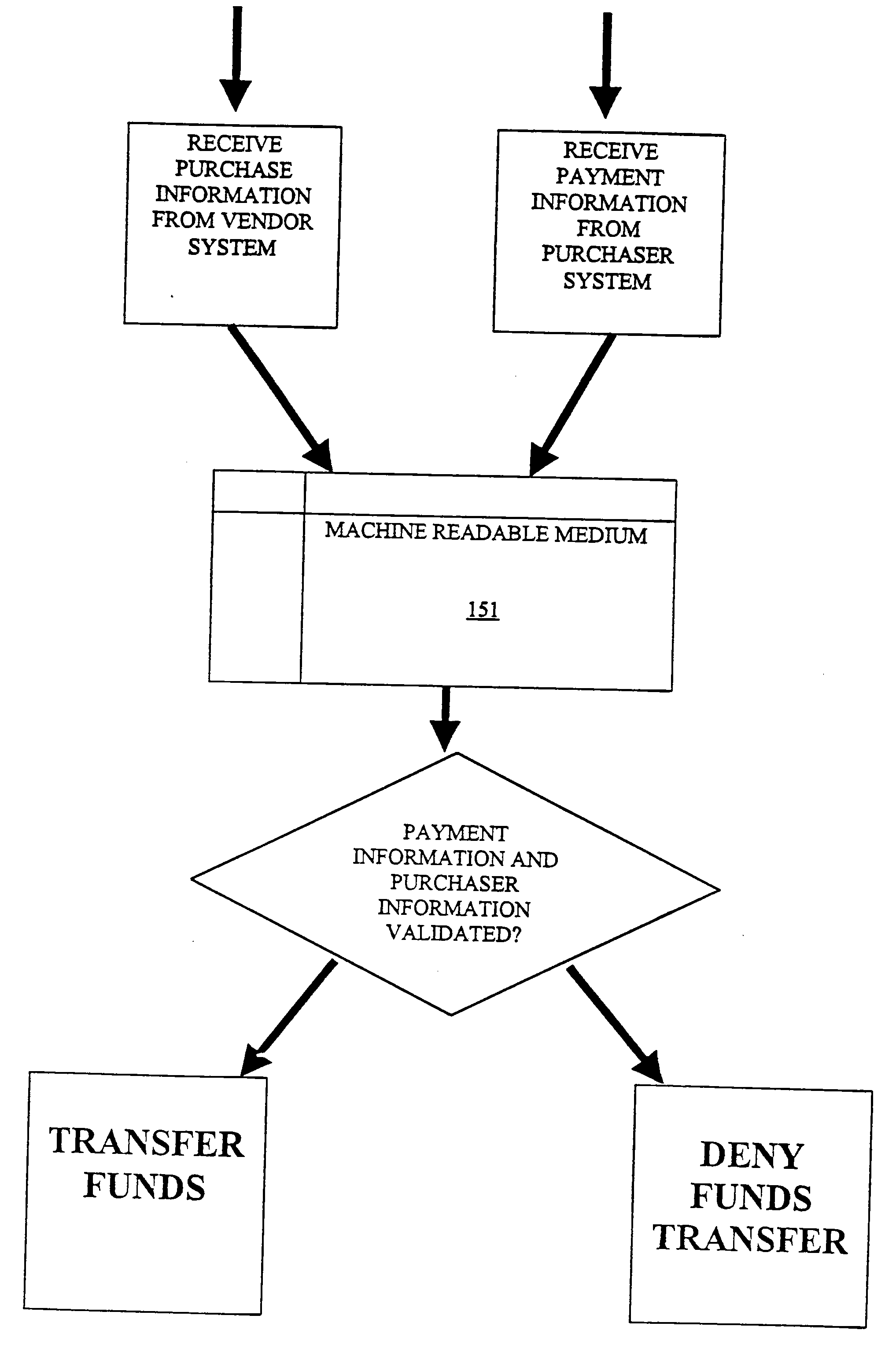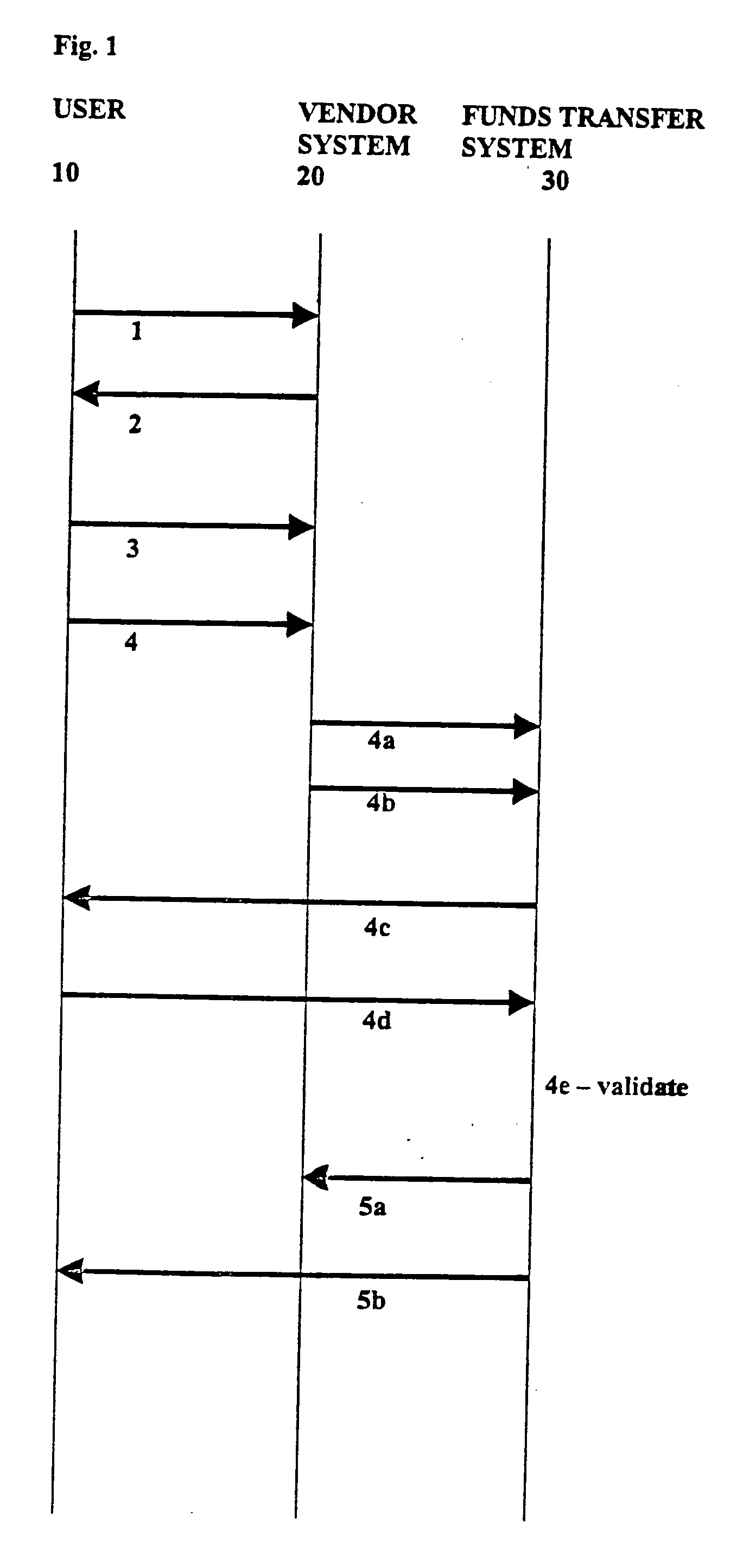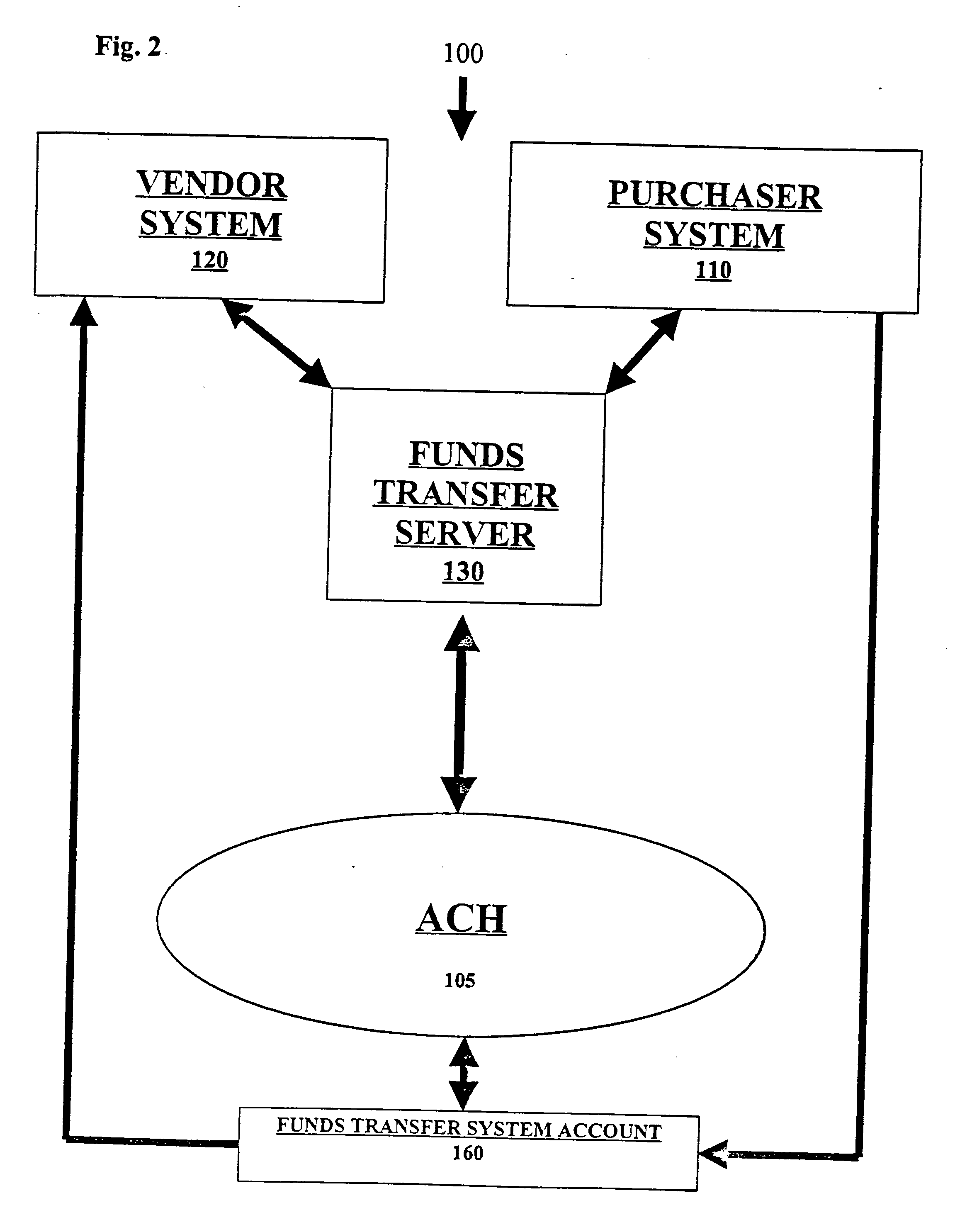Electronic purchasing and funds transfer systems and methods
a technology applied in the field of electronic purchasing and funds transfer systems, can solve the problems of increasing consumer wariness of the apparent free flow of sensitive personal, financial and other information over the internet, increasing the difficulty of merchants, so as to achieve the effect of limiting fraud
- Summary
- Abstract
- Description
- Claims
- Application Information
AI Technical Summary
Benefits of technology
Problems solved by technology
Method used
Image
Examples
Embodiment Construction
[0035]Reference will now be made in detail to the present preferred embodiments of the invention, examples of which are illustrated in the accompanying drawings. The methods and corresponding steps of the invention will be described in conjunction with the detailed description of the system.
[0036]The methods and systems presented herein may be used for transferring funds from a payor to a payee without either party having access to the other's financial information. The present invention is particularly suited for electronic funds transfers, such as consumer-to-business e-commerce transactions. However, the present system applies equally well to business-to-business or consumer-to-consumer transactions and is intended to cover such transactions within its scope. For purpose of explanation and illustration, and not limitation, an exemplary embodiment of the system in accordance with the invention is shown in FIG. 1.
[0037]FIG. 1 depicts the steps of one embodiment of the present inven...
PUM
 Login to View More
Login to View More Abstract
Description
Claims
Application Information
 Login to View More
Login to View More - R&D
- Intellectual Property
- Life Sciences
- Materials
- Tech Scout
- Unparalleled Data Quality
- Higher Quality Content
- 60% Fewer Hallucinations
Browse by: Latest US Patents, China's latest patents, Technical Efficacy Thesaurus, Application Domain, Technology Topic, Popular Technical Reports.
© 2025 PatSnap. All rights reserved.Legal|Privacy policy|Modern Slavery Act Transparency Statement|Sitemap|About US| Contact US: help@patsnap.com



